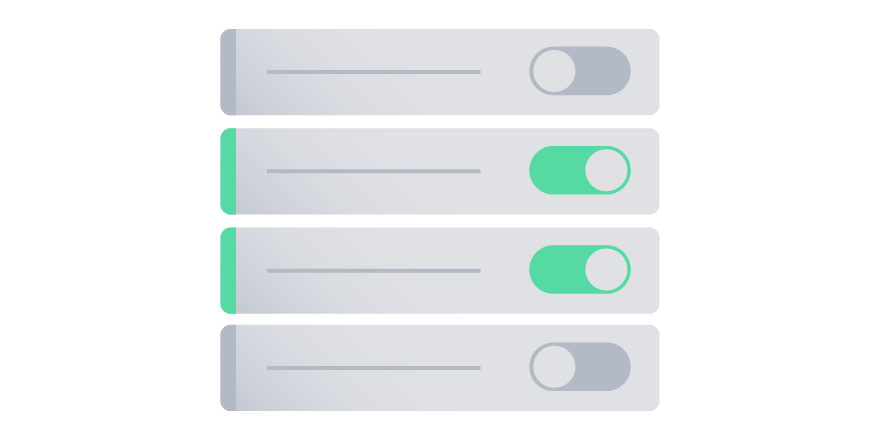Project configuration makes Jira… Jira. Teams choose Jira because collaboration is messy. Jira’s workflows, issue types, fields, and customizable permissions allow teams to model their real world work digitally so they can work together better. We know that in the right hands, Jira configuration is like an architect’s blueprint – a well-designed structure that everyone follows to work together in harmony. But if you aren’t an architect, understanding that blueprint can be confusing or intimidating. On the Jira Cloud team, we’re working hard to change this.
Over the past two years, we’ve gone back to the drawing board and completely reimagined how Jira projects are created, set up, and managed. Our goal? Open up Jira so that everyone – from startups to our largest enterprise customers – can spend less time “administering” and more time getting work done.
The new Jira project configuration experience is one big step towards achieving this goal.
Every project created with the new agility template is completely independent from all other Jira projects. Instead of using configuration schemes, they have their own boards, statuses, issue types, workflows, fields, and more. This is the foundation for the all new Jira project configuration experience.
Enabling teams to run their own projects
By default, any Jira user can create an independent project. Agility projects are lightweight projects for software teams that just want to get to work, then add more advanced agile features like sprints, backlogs, or estimation as they go. Since they don’t rely on schemes that are managed in Jira’s global settings, all Jira users can create a project and configure it. This starts when you create your first agility project: we’ve completely redesigned the project creation screen in Jira to give you much more information about what’s included in the template you have selected.

We also introduced project access, an easy way for you to ensure the right people have access to your project. You can choose the right access level before you create the project, and then add your teammates when you’re ready.
The power of Jira, right where you want it
If anyone can create a project, projects need to be easy for anyone to set up. We’ve focused on making settings easy to find and easier to change. Besides configuring your boards’ columns directly inline, you can also add powerful rules to your board, like automatically assigning issues to someone on your team or updating a custom field when issues are moved.
That’s just the beginning. Teams use Jira to track all different types of work. That’s why we’re adding the ability to define new issue types, just for your project. For example, the agility template ships with Stories by default, but you can add tasks, bugs, or any custom issue type directly from your project’s settings.
Custom fields are one of Jira’s most powerful features. They allow teams to track their most important data in whatever format they need. But, you don’t always know exactly what fields you will need upfront. That’s why we’re bringing an all new fields designer to Jira. You will be able to create and add custom fields to each issue type, with an intuitive drag-and-drop experience.
In the future, we’ll bring advanced permission options and everyone’s favorite, the Jira workflow editor, to agility projects so that all of the power of Jira administration is available directly from project settings. No more jumping administration screens, asking your admin to make a small change to your workflow, or wishing you could use different custom fields on your issues. The new Jira project configuration experience gives autonomous teams the tools they need to make Jira work for them.
Power to the people Jira admins
In companies where every team is free to work however they like, the new Jira project configuration experience allows Jira admins to hand over much of their work directly to the teams using Jira, so they can set up projects exactly how they need without the admin’s intervention.
But we know that in many companies, Jira admins play a key role in defining best practices across many teams. In the long run, our goal is to help Jira admins spend less time on administration tasks that teams can self-serve and more time enabling their organizations to succeed. That’s why we’re bringing custom templates to Jira. This will be an all-new way for Jira administrators to copy and share project configuration across multiple projects.
With templates, admins will be able to define a single project as a template. Then, you can use that template as a starting point to create new projects. Or you can link multiple projects to a single template. Any changes you make to the template will apply to every project linked to that template. You’ll be able to grant users permission to create projects, but only based on templates that you have defined up front. This is great for organizations that have clearly defined processes with lots of teams that need to work in a standardized way.
We know that setting up a Jira project correctly is like tuning an engine. Get it wrong and you’ll start grinding your teams’ gears. Get it right and everyone is off to the races! Building the new Jira project configuration experience is one of the largest investments the Jira team has ever made, and we can’t wait to share it with you.
Interested in reading more about the new Jira experience? Click the button below to get the scoop on our agility boards and projects.

